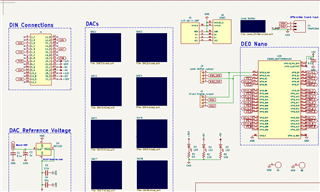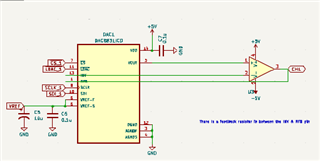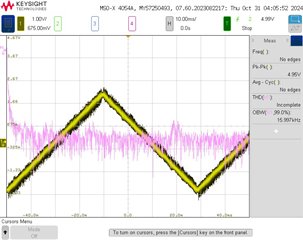- Ask a related questionWhat is a related question?A related question is a question created from another question. When the related question is created, it will be automatically linked to the original question.
This thread has been locked.
If you have a related question, please click the "Ask a related question" button in the top right corner. The newly created question will be automatically linked to this question.
Tool/software:
I am trying to use DAC8831 to produce an analog signal around 20Hz - 20kHz. I followed the schematic suggested by the datasheet and added all the capacitors mentioned in the datasheet. The output I got is very noisy even with an extra 10uF film capacitor attached to the power supply lane. Should I try to have a reconstructional filter? Attached are the schematic of the PCB and the output signal measured by the oscilloscope. 


Hi Xiang Miao,
Is the output you are seeing on the oscilloscope from the DAC or the op amp? There's no capacitors on the screenshot you sent on the op amp power supplies, are they just missing from the screenshot?
Also, could you explain a bit more what you're seeing on the oscilloscope? Is the yellow line the output and the pink line a zoomed in version? Additionally, see how much noise the output has when you are not writing to the DAC. While unlikely, there could be some digital feedthrough.
Thanks,
Erin
Hi Erin,
Thank you for your reply! THe output I see on the oscilloscope is from the op amp. There is no capacitors on the op amp power supplies in our pcb design, but i soldered a 100nF film capacitor between the V++ and V--. In the oscilloscope screenshot, the yellow line is the output, and the pink line is the fft analysis of the output. The noise i see when I am not writing to the DAC is less significant, It's around 20-30mV range instead 100-150mV range. If it is the digital feedthrough problem, how can i change it?
Regards,
Lisa
Hi Lisa,
I would check to see how much noise is being generated by the op amp by measuring the noise on the DAC output itself.
Routing the digital lines away from the analog signals and separating the digital and analog ground planes are the primary ways of fighting digital feedthrough noise. You could also try adding a small capacitor to the DAC output to try to negate the high frequency noise.
Thanks,
Erin